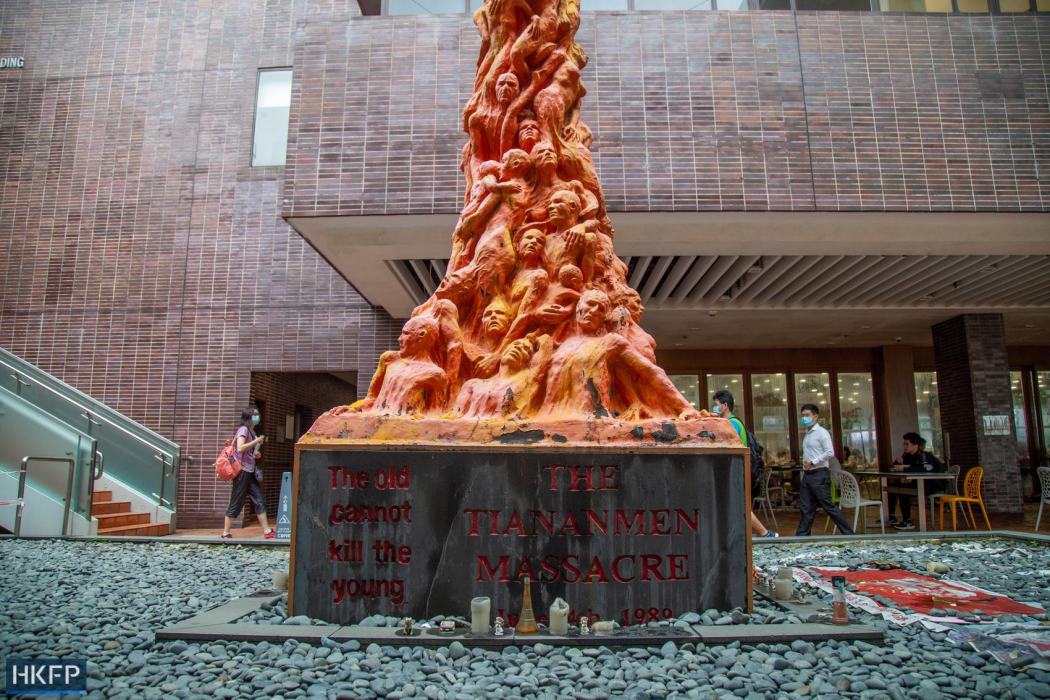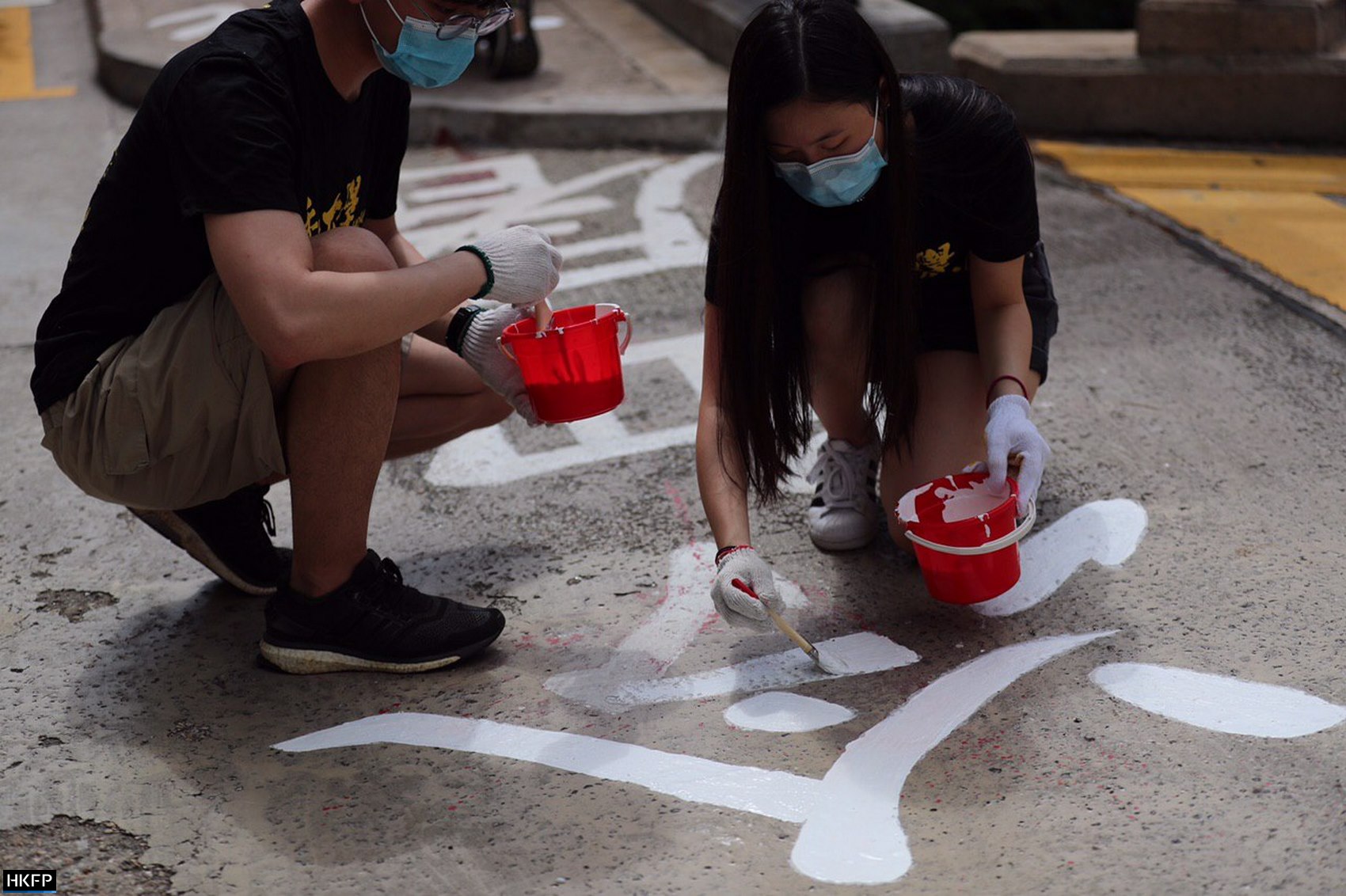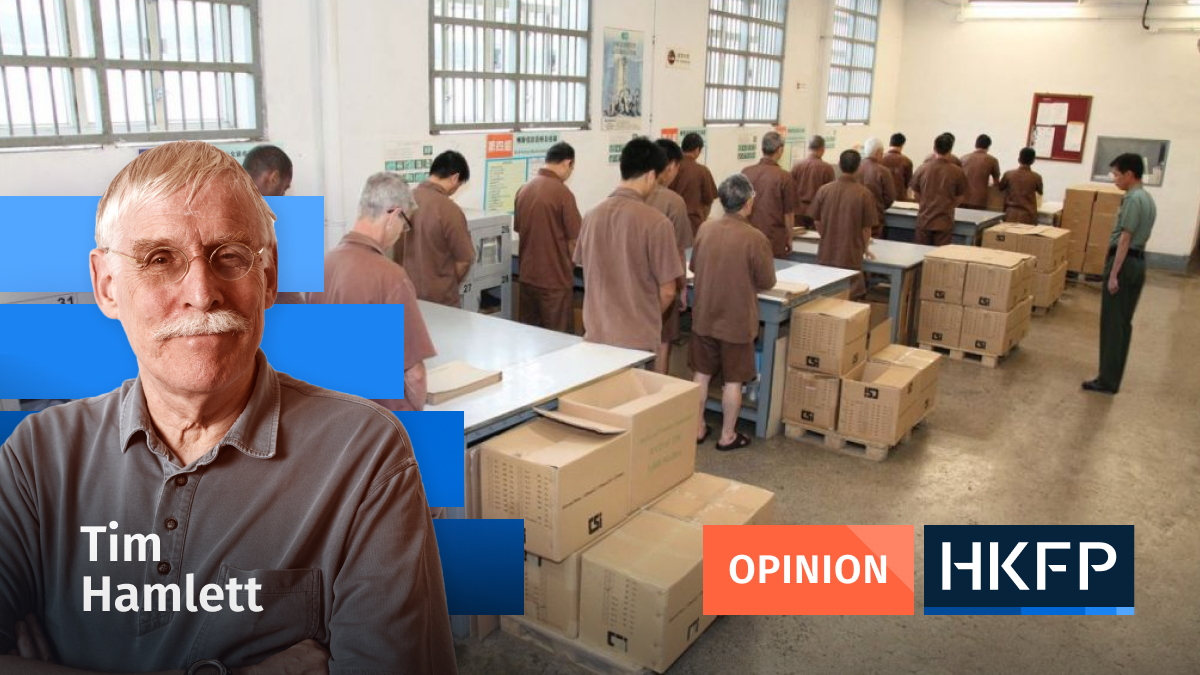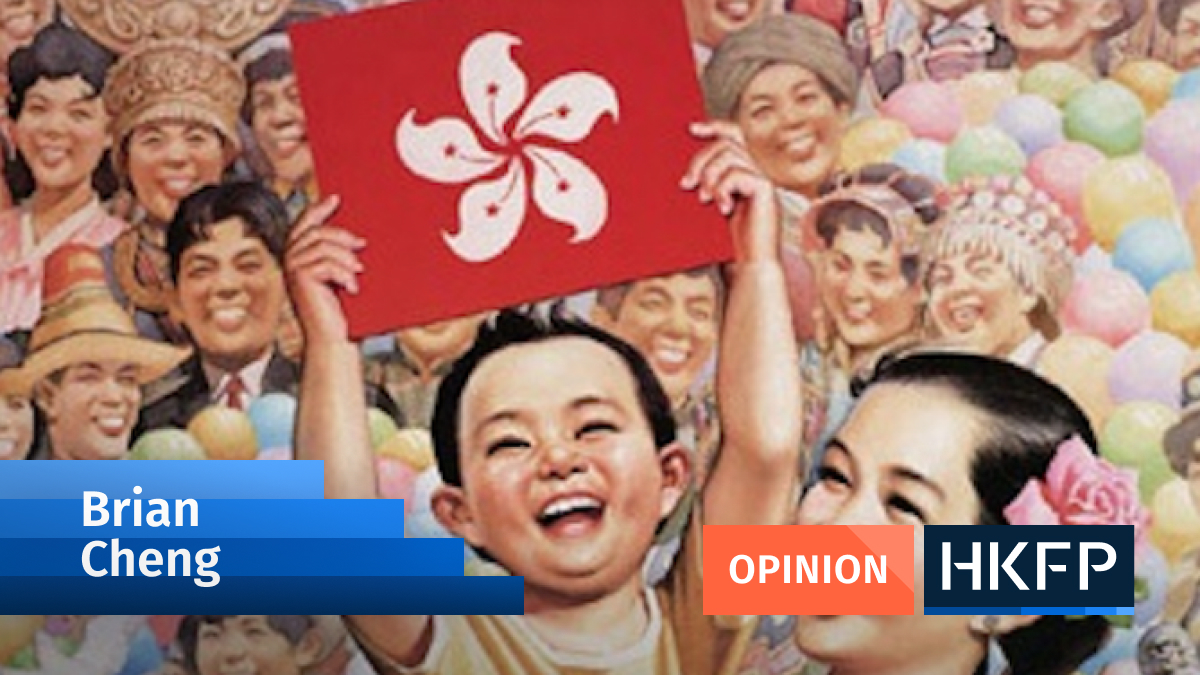A nightmarish eight-metre-high tangerine-coloured cenotaph composed of intertwined naked bodies with hands outreached and mouths agape, the Pillar of Shame was never a subtle symbol. Today, however, it is truly performing its identity, heaping shame upon shame as the university that has housed it for a quarter of a century demands its removal.
Yet the ultimate motive for this move may not be so much coerced amnesia as the abasement of yet another of Hong Kong’s proud institutions.

The Pillar of Shame is one of the last remaining physical reminders of Hong Kong’s tradition of remembering the 1989 killings in and around Tiananmen Square on June Fourth. In five short weeks, the Alliance in Support of Patriotic Democratic Movements of China has disbanded, its leaders have been arrested for incitement to subvert state power, the June Fourth Museum has been raided, and access to its website restricted from Hong Kong.
In removing the exhibits from the museum, the authorities are once again hiding evidence of the crimes of June Fourth, though it is notable that this time the actions were taken by Hong Kong police and not the mainland.
Beijing’s fear of the destabilising power of public memory is such that it noted the 400 electric candles placed in the US Consulate last June Fourth as an example of US interference in Hong Kong. In a statement, the Chinese Foreign Ministry described the orange points of light as a “so-called candlelight vigil staged by those who are opposed to China and attempt to destabilise Hong Kong.” This underlines an unwavering three-decade-long strategy to link the 1989 protests with external interference, as well as signalling Beijing’s keenness to expand the veil of silence surrounding June Fourth to Hong Kong.

Yet Beijing must realise that, when it comes to reformatting memories, Hong Kong presents a very different proposition from China in 1989, whose population had only emerged from the chaos of the Cultural Revolution a decade before. In today’s Hong Kong, three decades worth of ritualised demonstrations of mass memory are coded deep into the public consciousness of a highly educated population. For many young Hongkongers, the annual vigil is their first memory of political action.
The Pillar of Shame, by Danish sculptor Jens Galschiot, plays its own role in that political calendar, forming a central role in campus memorial activities. In a solemn June Fourth ceremony, students wash the statue, wiping away the dirt. “We hope to defend historical truth given that our freedom of speech is dwindling,” one student representative told reporters this year, about a ritual made more poignant by its imminent demise. The authorities must realise that even if they try to outlaw such actions and ban vigils, they cannot erase such deeply-rooted memories.

The recently released book by historian Jeremy Brown, June Fourth; The Tiananmen Protests and the Beijing Massacre of 1989, suggests a different motive. Brown describes the post-June-Fourth purge in 1989 that rolled through universities and state-run work units in China, requiring students and employees to write self-criticisms. Many went through the motions, realising that the aim was not so much to exact heartfelt pledges of loyalty but rather an explicit performance of self-abasement and subjection to power.
Lawyer Pu Zhiqiang, then a graduate student, was one of the very few who were completely unrepentant. He even responded to accusations of financial malfeasance by admitting he had misspent money buying athletic shorts because he had pooped his pants during the protests. Pu Zhiqiang, Brown writes, suspected “the purge was about making people bow down to the post-massacre reality.”

Viewed in this light, these most recent moves can be seen as a purge rolling out that culture of abasement to Hong Kong. In requesting the removal of the Pillar of Shame, Hong Kong University is bowing down to the post-National Security Law reality and signalling that it will sacrifice its century-old tradition of academic freedom and critical inquiry in the interests of self-preservation.
It has already repudiated its legacy of student activism by shutting down the Student Union, barring student leaders from campus and sitting on its hands as four student leaders were arrested for terrorism. The Chinese University is following suit, as the Global Times warns “there is increasingly no room for anti-government and trouble-making groups or organisations in the education sector to abuse academic freedom.”
For the Alliance leaders, protecting the memory of Tiananmen has always been the first line of defence. “We have to use this moment to say Hong Kong people will not submit to your rewriting of history,” jailed lawyer Chow Hang-Tung told the Washington Post in June. The acquiescence of HKU in urging the removal of the Pillar of Shame signals its submission, not just to the rewriting of history, but to the reorienting of its educational purpose in this new era of national security.

The disbanding of union groups and political parties also illustrate the coerced performance of subjection by a population left with no other choice. The notion of a Communist purge seems so retrograde, so antithetical to Hong Kong’s reputation as a modern skyscraper-lined financial centre that it is jarring. Yet no-one can deny that Hong Kong’s institutions are being reshaped at warp-speed as the post-2019 rectification campaign destroys its once-thriving civil society.
The readiness of prominent Hong Kong figures to purge themselves shows their understanding of the value of their own debasement. One example is lawmaker Ma Fung-Kwok, who signed a public statement about the 1989 killings 30 years ago, yet this year airily denied that anyone had died in Tiananmen Square. “How can you take something from 30 years ago to say that it’s still effective today?” he asked plaintively.
Former Chief Executive Leung Chun-ying understands this dilemma all too well. Having placed newspaper adverts condemning the killings in 1989, he has kept uncharacteristically silent on the issue.

Yet one final symbol still remains at HKU. Painted on a pavement at Swire Bridge are the words, “Souls of martyrs shall forever linger despite the brutal massacre. The spark of democracy shall forever glow for the demise of evils.” On the same day every year that the students wash the Pillar of Shame, they repaint this slogan. Even if it is painted over – as will surely follow – this site will remain symbolic for the generations of students who have stepped over those words, clutching their piles of books, for the past 30 years.
These words will not be forgotten by Hongkongers. Nor will those imprinted on the base of the Pillar of Shame: “The old cannot kill the young forever.”
Support HKFP | Policies & Ethics | Error/typo? | Contact Us | Newsletter | Transparency & Annual Report | Apps
| HKFP is an impartial platform & does not necessarily share the views of opinion writers or advertisers. HKFP presents a diversity of views & regularly invites figures across the political spectrum to write for us. Press freedom is guaranteed under the Basic Law, security law, Bill of Rights and Chinese constitution. Opinion pieces aim to point out errors or defects in the government, law or policies, or aim to suggest ideas or alterations via legal means without an intention of hatred, discontent or hostility against the authorities or other communities. |
Help safeguard press freedom & keep HKFP free for all readers by supporting our team

More HKFP OPINION:
HKFP has an impartial stance, transparent funding, and balanced coverage guided by an Ethics Code and Corrections Policy.
Support press freedom & help us surpass 1,000 monthly Patrons: 100% independent, governed by an ethics code & not-for-profit.










